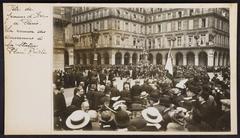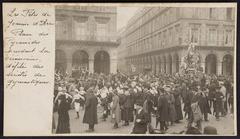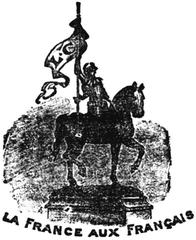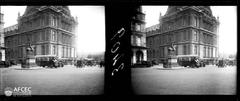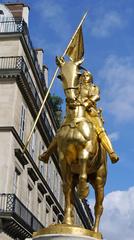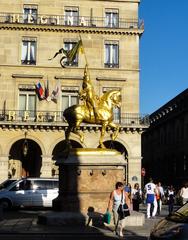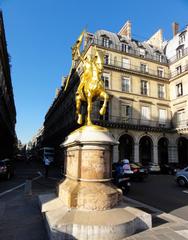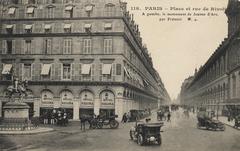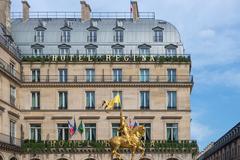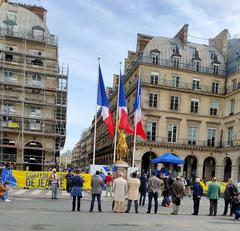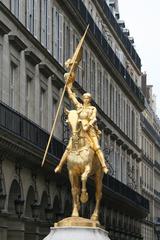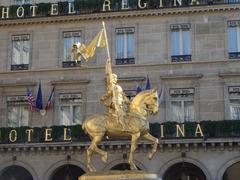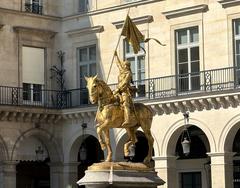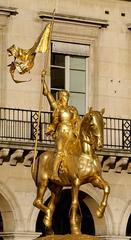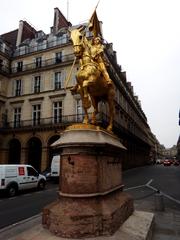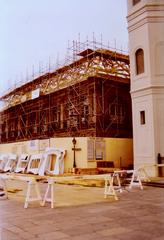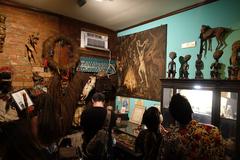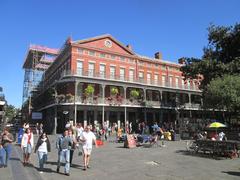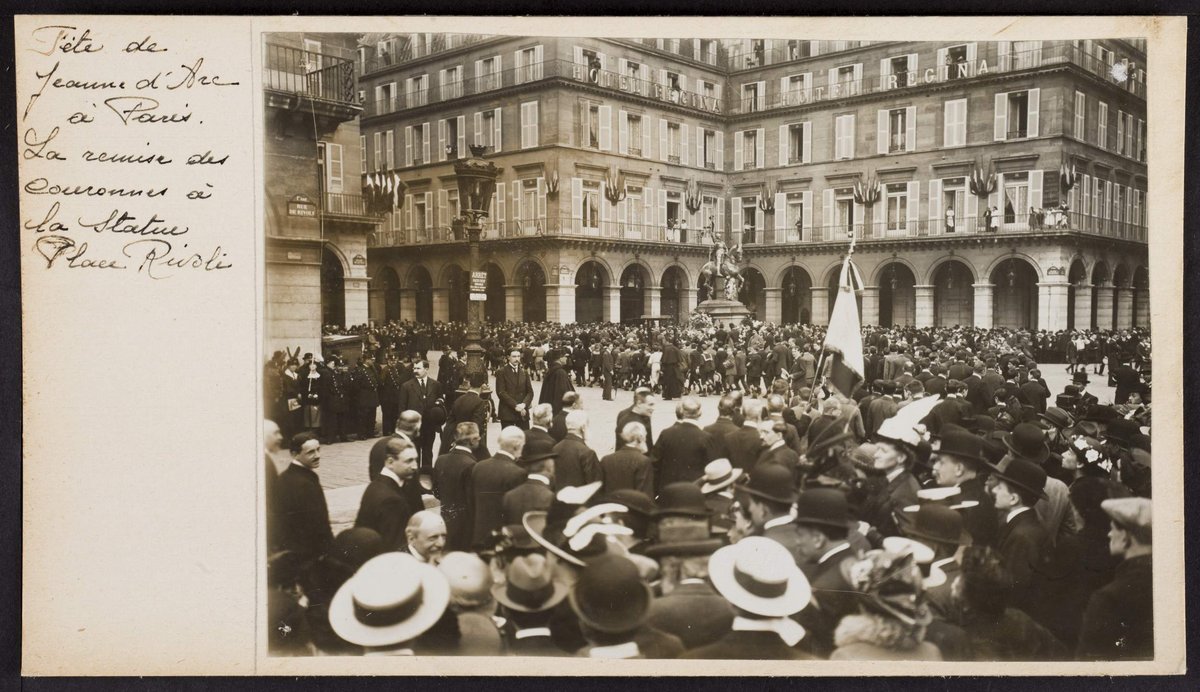
Joan of Arc Monument Visiting Hours, Tickets, and Historical Information in New Orleans
Date: 01/08/2024
Introduction
The Joan of Arc Monument in New Orleans stands as a gilded tribute to the city’s deep-rooted French heritage and the extraordinary legacy of Joan of Arc, one of history’s most iconic figures. This comprehensive guide is designed to provide historical insights, visitor information, and practical travel tips to help you make the most of your visit to this remarkable landmark. Joan of Arc, known as the ‘Maid of Orléans,’ was a pivotal figure in French history who led the French army to key victories during the Hundred Years’ War (New Orleans Historical). The monument, a gift from France unveiled in 1972, is a replica of the original statue by sculptor Emmanuel Frémiet in Paris (The Monumentous). Beyond its aesthetic appeal, the statue symbolizes the cultural and historical connections between New Orleans and France, making it a must-visit for history enthusiasts and tourists alike.
Table of Contents
- Introduction
- Historical Background
- Visitor Information
- Cultural Impact
- Travel Tips
- FAQ
- Conclusion
- Call to Action
Historical Background
Joan of Arc: The Maid of Orléans
Joan of Arc, also known as the “Maid of Orléans,” was a pivotal figure in French history. Born in 1412 in Domrémy, France, she claimed to have received visions from saints instructing her to support Charles VII and recover France from English domination during the Hundred Years’ War. At the age of 17, Joan led the French army to a momentous victory at the Siege of Orléans in 1429, marking a turning point in the war. Her subsequent capture by the Burgundians, allies of the English, led to her trial and execution for heresy in 1431. Joan was posthumously exonerated in 1456 and canonized as a saint in 1920 (New Orleans Historical).
The Joan of Arc Monument in New Orleans
The Joan of Arc Monument in New Orleans is a gilded bronze statue that stands as a testament to the city’s French heritage and its connection to Joan of Arc. This statue is one of several copies of the original 1899 statue by French sculptor Emmanuel Frémiet, which resides in Paris. The New Orleans statue was a gift from France, unveiled in 1972, and initially placed outside the International Trade Mart. In 1999, it was relocated to its current position at the Place de France in the French Market (The Monumentous).
Journey to New Orleans
The statue’s journey to New Orleans was fraught with delays and financial hurdles. After being cast by Frémiet, the statue languished in a French warehouse until 1958 when it was purchased by a New York company. It was then transported to New Orleans, where it remained in storage for 14 years due to the city’s inability to pay the $36,500 price tag. French President Charles de Gaulle eventually intervened, paying the ransom in 1964, but the statue was not installed until 1972 at the Rivergate Convention Center. It was later moved to its current location in 1999 (New Orleans Historical).
Significance of the Monument
The Joan of Arc Monument has become an iconic symbol of New Orleans, representing the city’s resilience and its deep-rooted connection to French culture. Joan of Arc is considered the unofficial patron saint of New Orleans, and her statue serves as a focal point for cultural and historical celebrations. The monument’s presence has transformed the Place de France into a significant cultural landmark, attracting both tourists and locals alike (The Monumentous).
Visitor Information
Visiting Hours and Tickets
The Joan of Arc Monument is accessible to the public 24 hours a day, seven days a week. There is no admission fee to view the statue. However, guided tours of the surrounding French Quarter, which include the monument, can be booked through various local tour companies.
Accessibility
The monument is located in a pedestrian-friendly area at the Place de France in the French Market, at the corner of Decatur Street and N. Peter Street. The site is wheelchair accessible, and nearby public transportation options include streetcars and buses.
Special Events
One of the most vibrant celebrations associated with the Joan of Arc Monument is the annual Joan of Arc Parade, organized by the Krewe de Jeanne d’Arc. Held every January 6th to commemorate Joan’s birthday, the parade features participants dressed in medieval attire, including a teenage girl chosen to represent Joan. The parade route winds through the French Quarter, passing by iconic streets such as Decatur, Bienville, and Chartres. Since its inception in 2009, the parade has grown significantly, now boasting 150 dues-paying members and attracting large crowds (Events Liker).
Cultural Impact
The Joan of Arc Monument and the associated parade have had a profound impact on the cultural landscape of New Orleans. They highlight the city’s historical ties to France and celebrate the legacy of a figure who embodies courage and perseverance. The monument and parade also serve as a means of identity for residents, fostering a sense of community and continuity with the past. The annual celebrations and the monument itself have become integral parts of the city’s cultural fabric, drawing visitors from around the world (The Monumentous).
Preservation and Maintenance
Maintaining the Joan of Arc Monument is a collaborative effort involving local government, historians, and community organizations. Over the years, the statue has undergone several restorations to preserve its golden luster and structural integrity. These efforts ensure that the monument remains a vibrant and enduring symbol of New Orleans’ heritage. The community’s dedication to preserving the statue underscores its significance as a cultural and historical landmark (New Orleans Historical).
Travel Tips
Visitor Tips
For those planning to visit the Joan of Arc Monument, it is located at the Place de France in the French Market, at the corner of Decatur Street and N. Peter Street. The best time to visit is during the Joan of Arc Parade in January, which offers a unique opportunity to experience the city’s rich cultural traditions. Visitors should also explore the surrounding French Quarter, known for its vibrant music scene, historic architecture, and culinary delights. Comfortable walking shoes are recommended, as the area is best explored on foot (Only In Your State).
Related Attractions
In addition to the Joan of Arc Monument, visitors to New Orleans can explore other historical and cultural landmarks in the French Quarter. These include the St. Louis Cathedral, Jackson Square, and the New Orleans Jazz National Historical Park. Each of these sites offers a glimpse into the city’s diverse history and cultural heritage. A self-guided walking tour is an excellent way to discover these attractions at your own pace (Action Tour Guide).
FAQ
What are the visiting hours for the Joan of Arc Monument?
The Joan of Arc Monument is accessible to the public 24 hours a day, seven days a week.
Is there an admission fee to visit the Joan of Arc Monument?
No, there is no admission fee to view the statue.
Are there guided tours available?
Yes, guided tours of the French Quarter, including the Joan of Arc Monument, can be booked through various local tour companies.
What is the best time to visit the monument?
The best time to visit is during the Joan of Arc Parade in January, which offers a unique cultural experience.
Conclusion
The Joan of Arc Monument in New Orleans is more than just a statue; it is a symbol of the city’s enduring connection to its French roots and the legacy of a remarkable historical figure. Whether attending the annual parade or exploring the French Quarter, visitors can fully appreciate the monument’s role in the vibrant tapestry of New Orleans. Don’t forget to check out related attractions and immerse yourself in the rich history and culture of this fascinating city.
Call to Action
For more information on New Orleans historical sites and travel tips, download the Audiala mobile app, check out our other related posts, or follow us on social media for updates.
References
- New Orleans Historical, n.d., New Orleans Historical
- The Monumentous, n.d., The Monumentous
- Events Liker, 2024, Events Liker
- Scott Manning, n.d., Scott Manning
- Only In Your State, n.d., Only In Your State
- Action Tour Guide, n.d., Action Tour Guide
- Joan of Arc Parade, n.d., Joan of Arc Parade
- Detail Oriented Traveler, n.d., Detail Oriented Traveler
